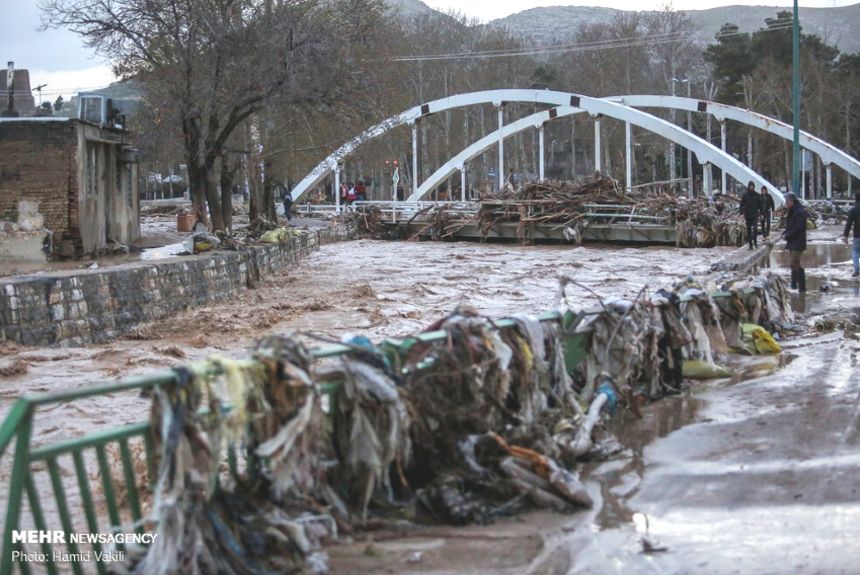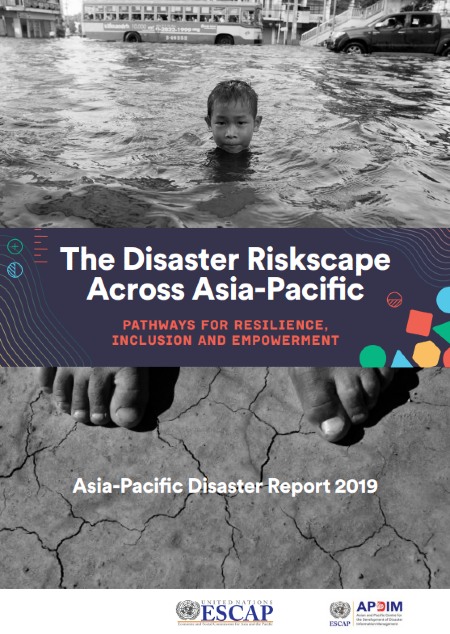
Asia-Pacific faces a daunting spectrum of natural hazards and disaster risks linked to climate change and environmental degradation. These natural disasters and threats are becoming uncertain and will increase in complexity and intensity.
The poorest communities, minority groups living in remote places, and those living in slum areas in expanding cities are the most vulnerable, the United Nations Economic and Social Commission for Asia and the Pacific (ESCAP) stated in their Asia-Pacific Disaster Report 2019.
The ESCAP is the United Nation’s largest aggrupation of countries cooperating to achieve inclusive and sustainable development. Composed of 53 member states and nine associate members and a regional think-tank, the ESCAP provides valuable economic, social, and environmental inputs to enhance regional cooperation.
The ESCAP Asia-Pacific Disaster Report 2019 contains five main chapters. We have provided an overview of each chapter in the succeeding paragraphs.
Chapter 1 of the report discusses the Asia-Pacific disaster ‘riskscape’
The report points out that recent weather events in the Asia Pacific are deviating from their usual tracks and are becoming more intense. Examples of these extreme natural hazards are the following:
- the unprecedented flooding in Iran in March 2019 and in Kerala, India, in August 2018;
- the unusual cyclone activity near the equator in December 2017;
- cyclone Gita that caused extensive damage to eight Pacific Islands;
- and the sand and dust storms that span across the Persian Gulf, Arabian Sea, and the Bay of Bengal in May 2017;
The report identifies four distinct hotspots – clusters of ‘fragile environment’ with ‘critical socioeconomic vulnerabilities.’ These hotspots cross national boundaries as disasters like floods, and dust storms can quickly sweep from one country to another. These natural hazards can aggravate poverty, marginalization, and inequality, creating a vicious cycle.
It highlights the importance of cooperation among regions to monitor and work together to mitigate the impacts of climate change and natural disasters.
The four hotspots that the report identified are:
- Transboundary River basins of South and Southeast Asia, where hunger and poverty exist, with exposure to floods and droughts.
- The region surrounding the Pacific Ring of Fire is North and East Asia and Southeast Asia. Transport and ICT infrastructure and poor populations risk typhoons, tectonic hazards, tsunamis, and landslides.
- Pacific Small Island Developing States with high poverty rates and critical infrastructure are exposed to intensifying climate-related risks. Communities in these small island states are up to 5 times more vulnerable to climate hazards than those in other regions.
- Sand and dust storm risk corridors in South Asia, South-West, and Central Asia, where their poor population and some of their energy and transportation infrastructures are exposed.
Chapter 2 talks about reaching those left behind
The report shows that disasters widen inequalities and opportunities, undermine economic growth, and further set back those already living in poverty.
Most disadvantaged and left behind are farmers without access to education and medical care, those who do not own property and are unempowered to make decisions, and those who depend on agriculture for livelihood.
They will experience multi-hazard risks and be hit the hardest, resulting in a vicious cycle of inequality, poverty, and disasters.
Chapter 3 examines how governments can invest in outpacing disaster risk and breaking the vicious cycle of poverty, inequality, and disasters.
In this vicious cycle, the links between poverty, inequalities, and disasters can be broken through inclusive and transformative investments. It will require a shift of focus from disaster risk reduction that only focuses on disaster impacts but also includes and address the drivers of vulnerabilities of people who are most at risk of climate change disasters, the report says.
The report shows that when government invests in a comprehensive portfolio of risk-informed investments such as economic growth, disaster risks, education, health, and infrastructure, the number of people living in extreme poverty across 26 countries will be reduced.
Chapter 4 reviews technological innovations for brilliant resilience against climate hazards.
It states how advances in technology can be used to build resilience. Live data and information can be obtained through smartphones and digital technologies, providing early warning signals or delivering social protection services before, during, and after disasters.
The report presents how impact-based forecasting and early warning systems significantly reduced deaths and economic losses in North and East Asia against super typhoon Mangkhut in 2018.
Chapter 5 discusses resilience across the ‘riskscape,’ investments in resilience from the changing and uncertainty of natural hazards.
According to the report, investments can bring social co-benefits such as ‘better education, health, social and infrastructure management services, and higher agricultural production and incomes.’
While investments in resilience can present financial challenges, the costs are smaller than the price that disasters would incur. Investments also need to be inclusive, ensuring that the poor and vulnerable can access land, reliable early warning systems, and finance.
Investments are in the form of policy reforms, the report recommends. Whether or not to seize new opportunities to break the vicious cycle of poverty, inequalities, and disasters lies in each country’s government.
The report says transformative policy reforms are needed, and investments to include climate risks must be implemented to empower the most vulnerable people and communities across the riskscape.



Leave a Reply